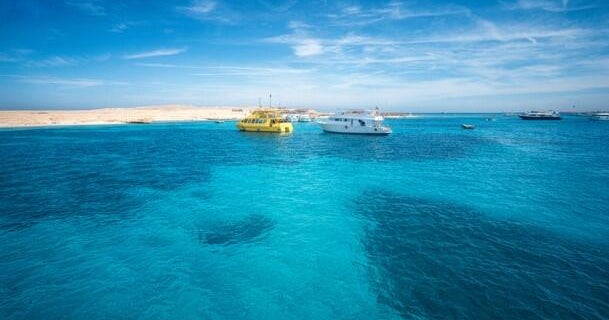Hurricane Irma strengthens to Category 5 storm as it targets Caribbean, U.S.
SAN JUAN, Puerto Rico -- Hurricane Irma, armed with the most powerful winds ever recorded for a storm in the Atlantic Ocean, bore down Tuesday on the Leeward Islands of the northeast Caribbean on a path that could take it toward Florida over the weekend.
Florida Gov. Rick Scott urged during a Tuesday evening press conference that all Floridians need to get prepared now ahead of the "incredibly dangerous storm" as officials are watching for storm surge and extreme winds.
- In Your Words: Tell CBS News how you're preparing for Irma
"We are preparing for Irma to directly impact our state," Gov. Scott said. "And while it's too early to tell how early where exactly the storm will hit ... do not sit and wait to prepare -- get prepared now."
Visit the website FLGetAPlan.com for more details.
"Get prepared. Learn your evacuation zone. Listen to your locals ... You have to take this storm seriously," Gov. Scott said. "Remember: your house can be rebuilt ... you can get new possessions, but you can't rebuild your life."
President Trump approved emergency declarations for the U.S. Virgin Islands, Puerto Rico and Florida, ordering federal assistance to supplement the local response to Hurricane Irma. The declaration authorizes FEMA to coordinate all disaster relief efforts.
Scott said earlier that he had requested Mr. Trump declare a "pre-landfall emergency for the entire state of Florida."
- Category 6 hurricane? Don't fall for these fake news stories
- How do I prepare for a hurricane? Use this checklist
Scott mentioned that at 5 p.m. Tuesday he waived all tolls in the state which would help evacuation efforts.
The governor said he has been in touch with multiple agencies ahead of Irma. He said he spoke to all 67 counties in Florida to make sure all requests and preparedness are met and resources are distributed.
Scott said the American Red Cross is sending 1,000 volunteers to Florida ahead of Irma.
Reports that bottled water has run out across the state were shot down by Scott during the press briefing Tuesday night. He said that if there are any confirmed shortages they should be reported to Florida's emergency operation center at 850-921-0217.
"Be considerate of your neighbors and only take what you need," Scott said of families going out to buy water.
Earlier Monday, 100 members of Florida's Army and National Guard to support with planning, logistics and operations for potential impact from Hurricane Irma. Scott said the servicemembers would be spread across the state and nearly 7,000 Guardsmen and Guardswomen will report for duty Friday morning.
Irma has maximum sustained winds of 185 mph as it approached the Caribbean from the east, according to the U.S. National Hurricane Center (NHC) in Miami.
The NHC issued its 11 p.m. ET advisory and reports that Irma is about 50 miles east of Antigua, about 50 miles east-east southeast of Barbuda and is moving west-northwest at 15 mph.
Meanwhile, Irma remains a dangerous Category 5 and poses an immediate threat to the small islands of the northern Leewards, including Antigua and Barbuda, as well as the British and U.S. Virgin Islands and Puerto Rico.
"The Leeward Islands are going to get destroyed," warned Colorado State University meteorology professor Phil Klotzbach, a noted hurricane expert. "I just pray that this thing wobbles and misses them. This is a serious storm."
Four other storms have had winds that strong in the overall Atlantic region but they were in the Caribbean Sea or the Gulf of Mexico, which are home to warmer waters that fuel cyclones. Hurricane Allen hit 190 mph in 1980, while 2005's Wilma, 1988's Gilbert and a 1935 great Florida Key storm all had 185 mph winds.
What makes Irma so strong is unusually warm waters for that part of the Atlantic.
NHC said there was a growing possibility that the storm's effects could be felt in Florida later this week and over the weekend.
The government of the Dominican Republic issued a hurricane warning along the north coast of the country from the border with Haiti eastward to Cabo Engano, NHC added.
NHC says a hurricane warning is also in effect for:
- Antigua, Barbuda, Anguilla, Montserrat, St. Kitts and Nevis
- Saba, St. Eustatius and Sint Maarten
- Saint Martin and Saint Barthelemy
- British Virgin Islands
- U.S. Virgin Islands
- Puerto Rico, Vieques and Culebra
- Dominican Republic from Cabo Engano to the northern border with Haiti
The NHC says a hurricane warning means that hurricane conditions are expected somewhere within the warning area. A warning is typically issued 36 hours before the anticipated first occurrence of tropical-storm-force winds, conditions that make outside preparations difficult or dangerous. Preparations to protect life and property should be rushed to completion.
If Irma stays on the forecast track and reaches the Florida Straits, the water there is warm enough that the already "intense" storm could become much worse with wind speeds potentially reaching 225 mph, warned Kerry Emanuel, an MIT meteorology professor.
"People who are living there (the Florida Keys) or have property there are very scared, and they should be," Emanuel said.
Irma caused two U.S. Navy ships to go into a holding pattern, CBS News national security correspondent David Martin reports.
The amphibious assault ship USS Kearsarge and the dock landing ship USS Oak Hill were waiting off the east coast of Florida to see if they need to respond to Irma. The ships were en route to areas affected by Hurricane Harvey, which hit Texas and Louisiana last month.
The ships can provide things like medical support and maritime security, among other things.
Two other ships, the USS Iwo Jima and the USS New York, left their home port in Mayport, Florida, and were en route to Norfolk, Virginia, to load supplies and equipment for possible Irma relief, Martin reports.
American Airlines added extra flights out of St. Maarten and St. Kitts and Nevis Tuesday morning to get people out of Irma's path. American also added a flight out of Puerto Rico for Wednesday.
Late Tuesday, Key West international airport said it will close Wednesday night for all commercial flights, CBS News' Miles Doran reports.
The storm's eye was expected to pass about 50 miles from Puerto Rico late Wednesday.
"Puerto Rico has not seen a hurricane of this magnitude in almost 100 years," Carlos Anselmi, a National Weather Service meteorologist in San Juan, told The Associated Press.
Authorities warned that the storm could dump up to 12 inches of rain, cause landslides and flash floods and generate waves of up to 23 feet. Government officials began evacuations and urged people to finalize all preparations as store shelves emptied out on islands including Puerto Rico.
"The decisions that we make in the next couple of hours can make the difference between life and death," Puerto Rico Gov. Ricardo Rossello said. "This is an extremely dangerous storm."
Antigua and Barbuda Prime Minister Gaston Browne said he was confident Barbuda would weather the storm.
"I am satisfied that at a governmental level that we have done everything that is humanly possible to mitigate against the effects or the potential effects of this storm," he said. "What is really required now is for Antiguans and Barbudans ... to follow the warnings and to act appropriately so that we do not end up with any serious casualties."
Puerto Ricans braced for blackouts after the director of the island's power company told reporters that storm damage could leave some areas without electricity for about a week and other, unspecified areas for four to six months.
The utility's infrastructure has deteriorated greatly during a decade-long recession, and Puerto Ricans experienced an island-wide outage last year.
Both Puerto Rico and the U.S. Virgin Islands expected 4 inches to 10 inches of rain and winds of 40-50 mph with gusts of up to 75 mph.
"This is not an opportunity to go outside and try to have fun with a hurricane," U.S. Virgin Islands Gov. Kenneth Mapp warned. "It's not time to get on a surfboard."
In Florida, residents also stocked up on drinking water and other supplies.
Gov. Rick Scott activated 100 members of the Florida National Guard to be deployed across the state, and 7,000 National Guard members were to report to duty Friday when the storm could be bearing down on the area. On Monday, Scott declared a state of emergency in all of Florida's 67 counties.
Officials in the Florida Keys geared up to get tourists and residents out of Irma's path beginning Wednesday, and the mayor of Miami-Dade county said people should be prepared to evacuate Miami Beach and most of the county's coastal areas.
Mayor Carlos Gimenez said the voluntary evacuations could begin as soon as Wednesday evening. He activated the emergency operation center and urged residents to have three days' worth of food and water.
A new tropical storm also formed in the Atlantic on Tuesday, to the east of Irma. The hurricane center said Tropical Storm Jose was about 1,330 miles east of the Lesser Antilles with maximum sustained winds of 50 mph, according to its 11 p.m. ET advisory Tuesday. It was moving moving toward the west at 14 mph and is gradually gaining strength.
NHC says Jose could become a hurricane by Wednesday night.




